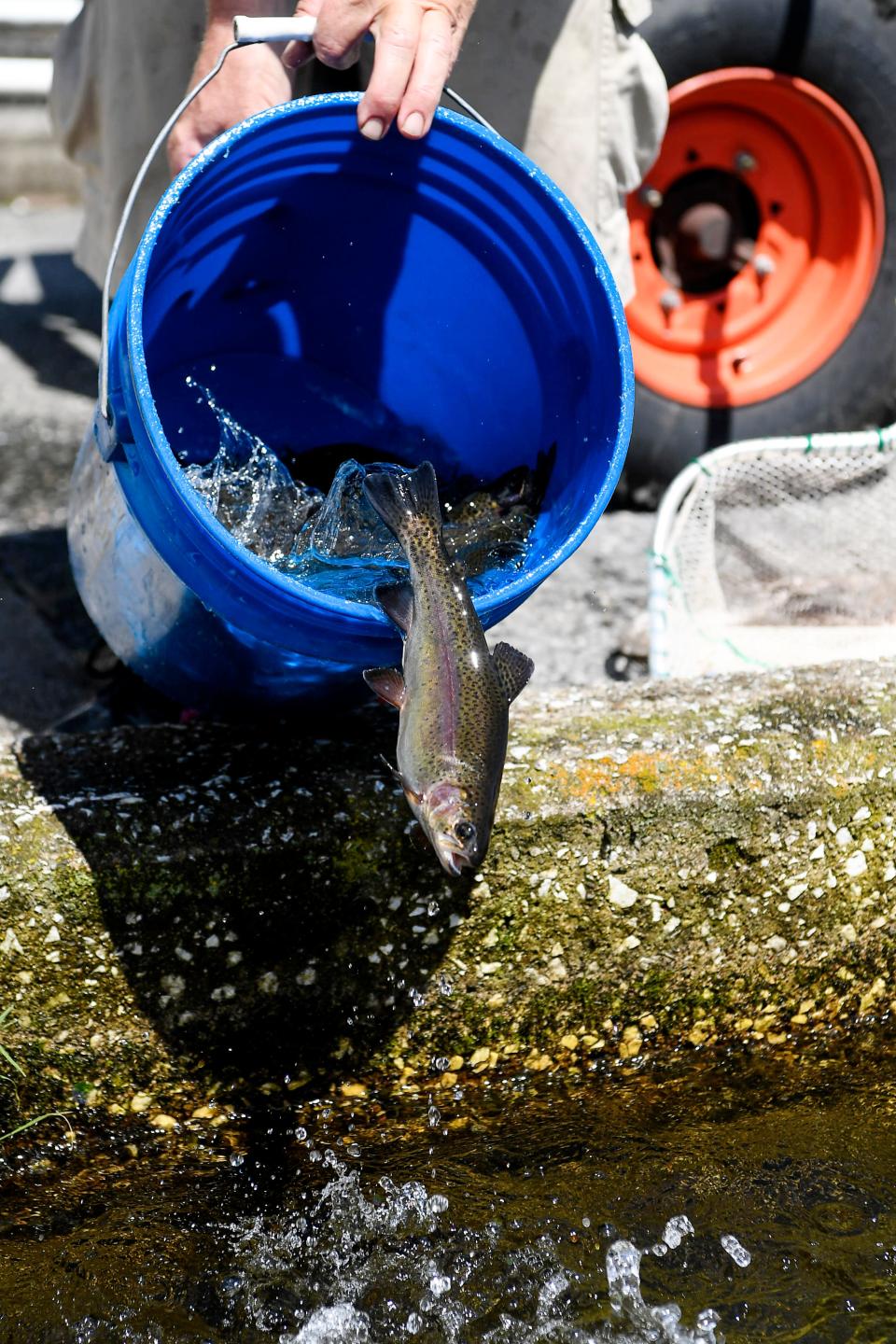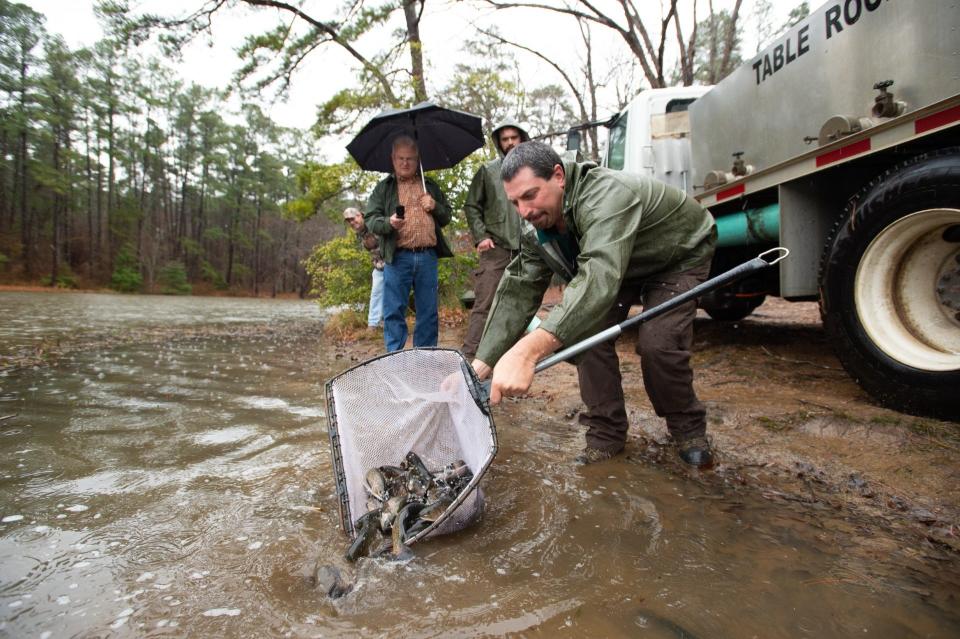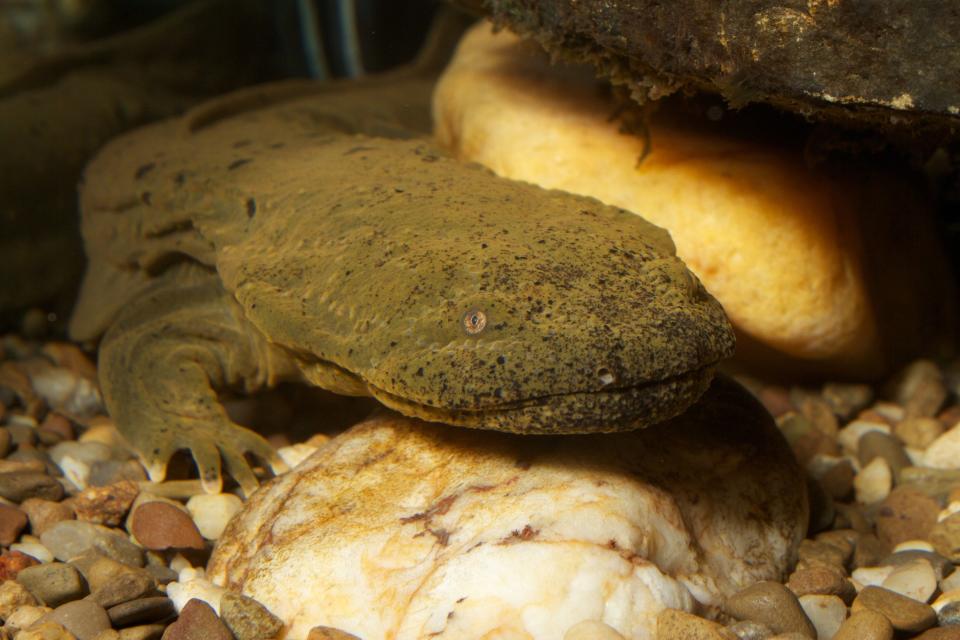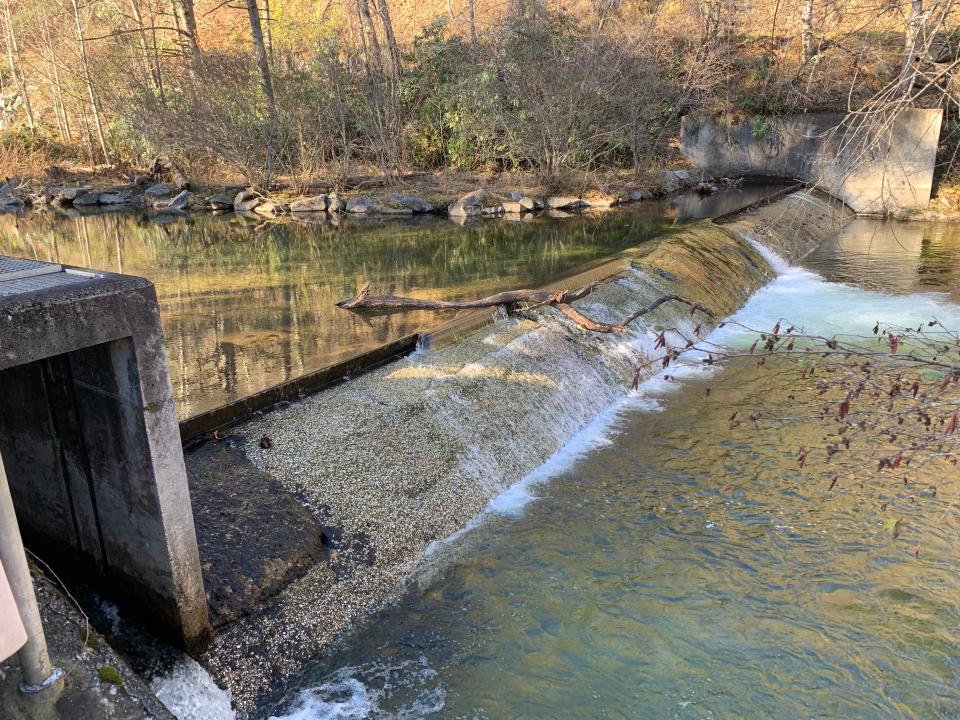Trout fishing in WNC? Wildlife Commission to add new trout for early spring season
ASHEVILLE - Over the next few months, the North Carolina Wildlife Resources Commission will stock Western North Carolina's streams and rivers with thousands of trout for the beginning of 2024's delayed harvest season.

Starting in March, delayed harvest streams across WNC will see the periodic restocking of rivers and streams until May, where anglers will be able to fish, but not harvest, additional trout.
Hundreds of thousands of anglers travel to fish in mountain trout streams every year, adding an estimated $1.38 billion to the North Carolina economy in 2022, according to the NCWRC.
Until June 1, anglers will only be able to fish delayed harvest streams with artificial lures with a single hook. Natural bait may be not possessed, and no trout can be harvested.
The stocking of delayed harvest waters coincides with the Feb. 29 closure of hatchery supported streams and rivers in WNC. In the coming years, hatchery supported waters could see more trout as discussion of expanding the Bobby N. Setzer State Fish Hatchery in Transylvania continues. The hatchery is the state's largest trout hatchery.
The hatchery saw extensive damage from Tropical Storm Fred in 2021. The storm flooded the Davidson River and led to the hatchery losing around 67% of its trout.

Activists disappointed by lack of focus on low-head dam
The expansion's environmental assessment study indicates the renovations could increase the population of the rare hellbender salamander, where the expansion could "improve habitat for hellbenders."
Also known as "water dogs," hellbenders were once common in the area but have disappeared throughout much of their natural habitat.
As a part of the hatchery expansion process, the objection period for the environmental assessment for the Bobby N. Setzer State Fish Hatchery has just opened. Only those who have previously submitted specific written comments regarding the proposal may submit objections on the environmental assessment for the location.

In September, the Citizen Times reported on the concerns regarding a low-head dam located along the Davidson River near the hatchery, which is necessary to the hatchery's waterflow. But two nonprofits noted the possible danger that the dam poses to humans and animals on the river.
A low-head dam is a structure designed so water flows continually over the crest of the structure. As a result of the dams, a "submerged hydraulic jump" can form an upstream current, trapping those who may travel over the structure, according to the American Society of Civil Engineers. The Davidson River low-head dam diverts water to the hatchery and would need to be replaced if removed.
Incidents involving low-head dams led to 111 deaths nationally between 2018 and 2020, according to the National Weather Service. Another 38 deaths were recorded at or near low-head dams in 2021.
In an October letter to the NCWRC and the National Forest Service, Kevin Colburn, the national stewardship coordinator for American Whitewater, disagreed with the decision to avoid removing the Davidson Rivers low-head dam, noting the decision may impact wildlife — despite the environmental assessment arguing it would improve the quality of life for local wildlife.

American Whitewater is a North Carolina-based nonprofit that focuses on river preservation and promotes paddling safety on rivers and streams.
"Avoiding a chance to restore such a treasured aquatic system on the Forest is disappointing, especially so with the new forest plan’s emphasis on restoration and the public interest in multi-purpose projects."
Colburn wrote in his letter that the dam could continue to pose a danger to hellbenders.
"Dam removal would serve as a small but achievable mitigation measure for these impacts if they were to be acknowledged," Colburn said.
Jeff Wright with the North Carolina Council of Trout Unlimited also wrote in October that the plan to avoid removing the dam is "inconsistent with the new Nantahala and Pisgah National Forests Land Management Plan."
More: Trout hatchery renovation to bring more trout, hellbenders to WNC region; feedback sought
When are WNC delayed harvest stocking dates?
Per NCWRC regulations, no trout may be possessed or harvested in delayed harvest streams until June 1, when streams pivot to hatchery supported trout waters regulations. However, anglers can still enjoy catch and release fishing as long as they are using the correct setups.
While Buncombe doesn't have any delayed harvest streams set for restocking, here are some WNC streams that will see new trout stocked on March 1:
Little River in Alleghany County.
Helton Creek and Trout Late in Ashe County.
Tuckasegee River in Jackson County.
Spring Creek in Madison County.
Mitchell River in Surry County.
Watauga River and Lake Coffey in Watauga County.
East Prong Roaring River and Stone Mountain Creek in Wilkes County.
To see the full delayed harvest schedule you can visit https://www.ncwildlife.org/Portals/0/Fishing/Images/2024/2024-Delayed-Harvest-Trout-Waters-Stocking-Schedule.pdf.
More information for mountain trout regulations can be found at https://www.eregulations.com/northcarolina/fishing/general-mountain-trout-regulations.
More: Good Hot Fish opens: What to know about Chef Ashleigh Shanti's new restaurant
More: Mountain trout fishing reeled in $1.38 billion for NC in 2022; Wildlife Commission report
Will Hofmann is the Growth and Development Reporter for the Asheville Citizen Times, part of the USA Today Network. Got a tip? Email him at WHofmann@citizentimes.com. Please help support this type of journalism with a subscription to the Citizen Times.
This article originally appeared on Asheville Citizen Times: WNC trout streams to be stocked for early fishing season; what to know

